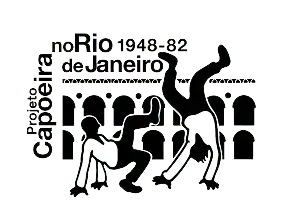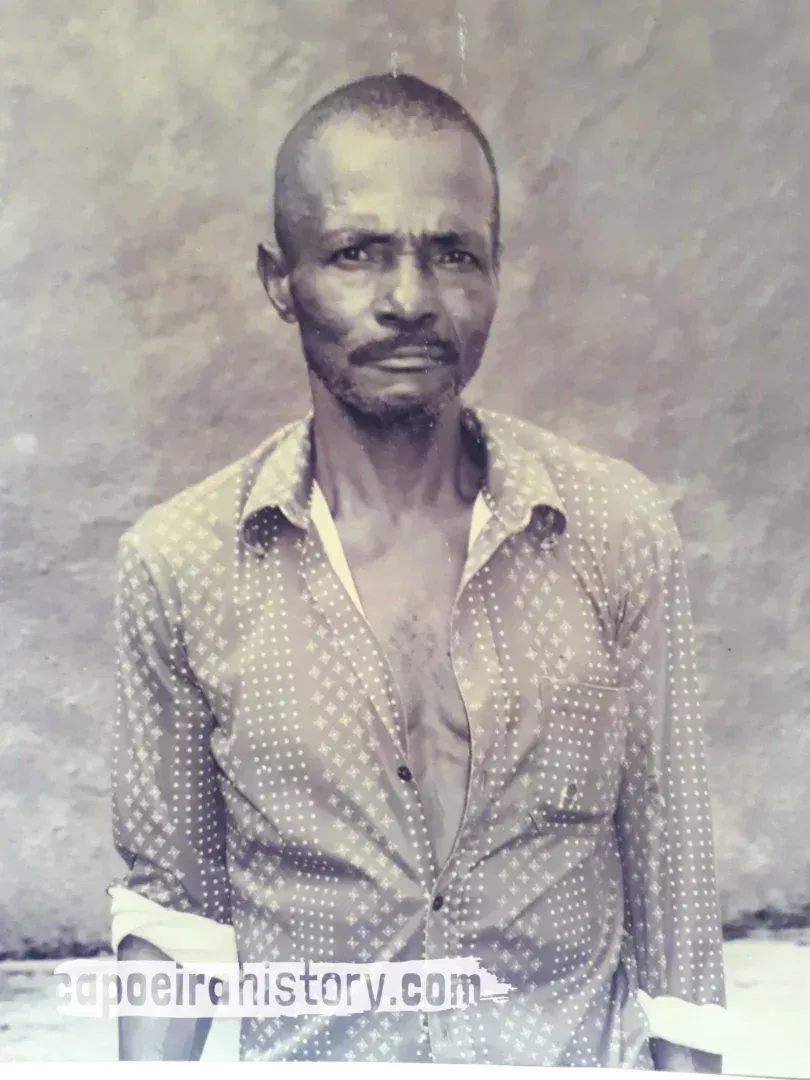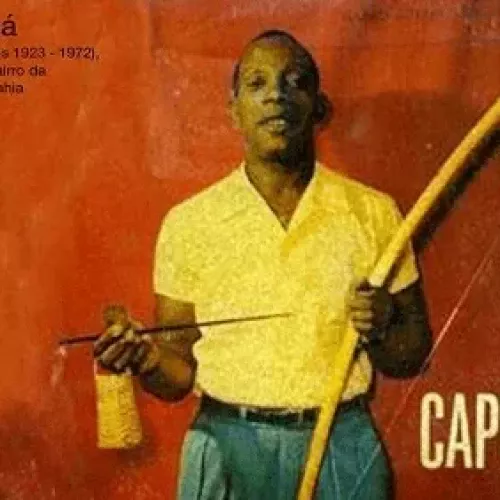Mário dos Santos, Master Mário Buscapé, is among the pioneers who brought Bahian capoeira to Rio de Janeiro. In 1953 he founded the capoeira group Bonfim.
Matthias Röhrig Assunção (April 20, 2020)
Mário dos Santos, better known as Master Mário Buscapé, was born in 1934 in a village near São Francisco do Conde, in the Bahian Recôncavo. According to his own testimony, his mother, Maria dos Anjos dos Santos, was a shellfish maker and his father, José Bidel dos Santos was a crabber. His father and his uncle Dendê practised capoeira and met up with famous capoeiras of the Recôncavo like Siri de Mangue, Canário Pardo and Besouro from Santo Amaro. According to Mário, Besouro even visited his house, but that must have been before he was born, as Besouro was killed in 1924.
Mário started to get acquainted with capoeira as a child, in improvised rodas in the yard of his house, his uncle Dendê being his first teacher. As a teenager he was employed (and practically enslaved, according to his testimony) on a nearby plantation.
In search of a better life, he came to Rio de Janeiro with an aunt in the early 1950s. He went to live in the poor Jacarezinho neighbourhood and his first job was to put up signs and covers on the railway track to avoid accidents. Afterwards, he worked for many years at the Cavan company, which made lamp posts for use throughout the city
There he met Irineu dos Santos, and Mário began to teach him the first steps of capoeira. Together with Irineu, he soon conquered other adepts to practice capoeira, among them Irineu’s brothers, Zé Grande and Deraldo, all from the dos Santos family, also from Bahia (but not related to Mário Buscapé).
In 1953 they founded the capoeira group Bonfim, also known later as “Capoeiras do Bonfim”. The group, at first, occupied a small space in the neighbourhood of São Cristóvão. As André Lacé wrote:
They didn’t stay there for long, because the space became small due to the large number of students. They moved the academy to the neighbourhood of Olaria, a spacious and pleasant place, and there they never stopped, training great capoeiristas, like the late Master Zé Grande, who stood out as their best disciple.”
Mário Buscapé also frequented the roda of Master Artur Emídio, one of the few rodas that took place regularly in Rio in the 1950s. Capoeiristas who lived through that era say that Mário was very impressed with the speed of Artur Emídio’s game and began to raise his game as well .
The Bonfim group, led by Master Mario Buscapé, became famous in Rio de Janeiro because it trained many high level capoeiristas, often winning the competitions that started to be organised in the city from the mid 1960s.
In 1969, Mario returned to Bahia, and his students Zé Grande and Deraldo took over the leadership of the Bonfim group in Rio. And it was only many years later, in 1994, that Bonfim’s students brought the master back to Rio de Janeiro.
Since then Mário Bonfim has been trying to rescue the heritage of the Bonfim group, which played such a central role in the development of capoeira in Rio de Janeiro in the decades from 1950 to 1970.
Note: Mestre Mário Buscapé passed away on 19 August 2021 in his native São Francisco do Conde, Bahia.
Watch the video documentary "Mestre Buscapé"!
Master Buscapé tells about his childhood, his learning in the Besouro lineage and his coming to Rio de Janeiro. Other masters who knew him comment on his performance in Rio and the creation, in the 1960s, of the group Capoeiras do Bonfim
Sources and to learn more:
Lacé, André Luis Lopes. Cover text of the LP Bonfim, recorded in 1968 in Rio de Janeiro by Mestre André Lace and remasterized by Nilson Rossi from RJ Studio in 1994.
Santos, Mário dos. A saga de uma lenda viva. Mário dos Santos. Edited by Paulinho Salmon. Rio de Janeiro: Azougue, 2016.
Interview with Mário Buscapé for the project Contemporary Capoeira in Rio de Janeiro, 21 August 2018.









